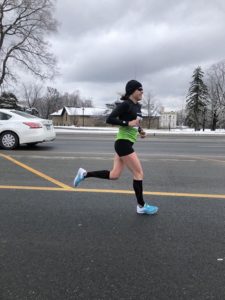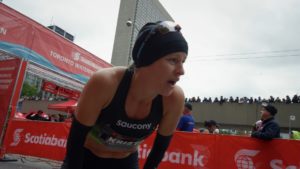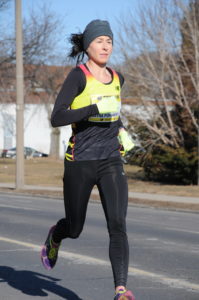How to Build Your Mileage & Stay Injury Free
This is the time of year where many runners are in kicking into gear for spring and summer race season. But you simply can’t start back up with the mileage you left off with, well at least not without setting yourself up for injury. You need to start slow and gradually bump up your weekly mileage – this will give your body time to adapt to the new work load and it will help decrease your risk of injury. So how exactly should you increase your mileage?
First thing first, you need to establish a baseline. Whether you are a veteran racer or a newbie the best way to start is to establish your baseline mileage. This is the number of kilometers you feel comfortable running in a week; it shouldn’t be too hard or too easy. Once you establish your sweet spot of mileage, you want to start your training below this to build your foundation and get back into a routine. Lots of experts talk about the 10% weekly increase but that’s a gross generalization and doesn’t take into account different training phases, experience level or fitness level. For example, if you are new to running you won’t be increasing your mileage for the first 3-4 weeks, as this is a time for you to focus on creating a new habit and improving your consistency of running. If you are an experienced runner, just getting back into it after a winter hiatus, you can be more aggressive and increase your mileage at a rate of 15-20% until you reach your baseline mileage. However, once you surpass your baseline and begin running new longer distances it is recommended that you be more conservative, increasing your mileage just 5-10% every two weeks.
Repeat training week. Increasing your mileage actually isn’t something you need/should do every week. In fact it’s a good idea to repeat a training week every so often. This is practically true if you are a beginner, are prone to overuse injuries or are just someone who requires more recovery time. A repeat week allows your body to adjust to the increasing mileage, intensity and length of your runs once you have surpassed your baseline.
Recovery week. Periodization of your training should involve more than just increasing mileage every week and integrating a repeat week every once in a while. It should also account for a recovery week every 4-6 weeks. Unlike a repeat week, a recovery week actually calls for you to decrease your weekly mileage and intensity by 10-25%, depending on the intensity of your training, experience level and your susceptibility to injury. This gives your body a chance to recover and adapt – some of your greatest gains as a runner actually occur during these phases of lighter work. During a recovery week you may choose to drop a tempo run, a speed workout and/or exchange an intense gym workout for an at-home bodyweight workout. Keep in mind though, that a recovery week is only necessary when you are training above your baseline.
Increasing your mileage is necessary overtime whether you are a seasoned racer or are just taking up running to improve your health and fitness. Your body is amazing and will adapt to stresses and loads placed upon it so if you want to improve your PB or just lose a couple of pounds you must push your body past its natural threshold if you want to see results – that’s just the nature of the beast.












 In the first couple kilometres aim to find a rhythm, feel out your legs, and warm up to your planned pace.
In the first couple kilometres aim to find a rhythm, feel out your legs, and warm up to your planned pace.



 Our Magazine
Our Magazine
